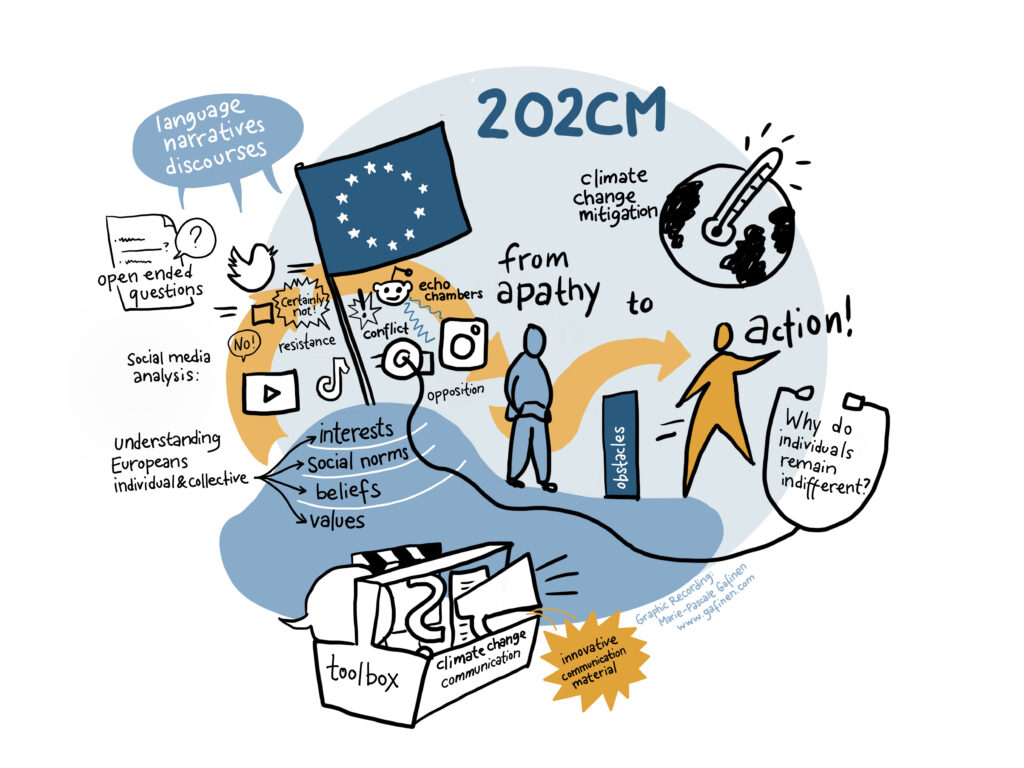Overcoming Obstacles and Disincentives
to Climate Change Mitigation:
A cross-cutting approach by human and social sciences
Project description
This research project has the theoretical and transformative aim to improve the scientific understanding of obstacles and disincentives to climate change mitigation and to understand how multimodal devices can operate on them, through the interdisciplinary collaboration between linguistics and social psychological approaches. The project will provide a practical tool in the form of an open-source research toolbox proposing advice, models, and resources to public authorities and concerned citizen on climate change communication strategies.

Through linguistic and discursive analyses of survey discourse (i.e. answers to open-ended questions) and of social media (Twitter), combining narrative and polyphonic perspectives, the aim of WP2 (Norway) is to contribute to an innovative understanding of European citizens’ opinions about obstacles versus opportunities to reducing GHG emissions and thus to the climate change mitigation.
WP3 and 4 (Belgium) are focused on a linguistic, semiotic and rhetoric approach of online discourses, aimed at identifying the signs of obstacles and difficulties concerning climate change in verbal and visual content, in connection with WP2 and WP5 and 6. We focus specifically on the interaction between image and text, by analyzing manually and automatically a corpus of messages from Twitter and Reddit and videos and images from YouTube and Instagram. WP1 is dedicated to coordination of the projet (Belgium).
In line with the other WPs, WP5 and 6 (France) are targeted to examine how and why individuals can remain indifferent and/or skeptical to the risks of climate change and what interventions might convert apathy into action. First, social psychological factors that determine individual engagement in pro-environmental behaviours are examined. Second, the effects of the climate change threat are observed on individual behaviours and responses. The methods combine qualitative as well as quantitative surveys and laboratory experiments (including eye-tracker and face-reader evaluations).
The project started on December 1, 2020, for 3 years.


